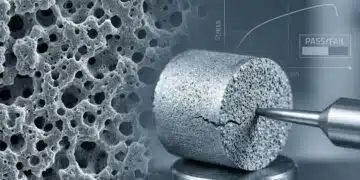Source: TT Electronics news
Woking, UK, 21 August, 2019 – TT Electronics, a global provider of engineered electronics for performance critical applications, today announced two new surface mount device (SMD) power inductors: the HM66M series for use in high frequency power conversion systems and EMI filter applications, and the HM78M series for use in high density and high frequency DC/DC converter applications.
The TT Electronics HM66M series power inductors are designed for the complex industrial and telecommunications markets. The HM66M is a shielded, miniature low-profile SMD inductor that integrates a ferrite material core for significant permeability and temperature advantages.
Characterized by low losses at high frequencies, these inductors are ideally suited for power supplies and frequency converters that operate with fast switching power semiconductors on a GaN basis. Power inductance is optimized within a frequency range from 700 kHz to 4 MHz, and designed for systems that require switching frequencies up to 4MHz and operating temperatures at 125°C. The HM66M series is offered in three standard case sizes: 60, 70 and 84.
The TT Electronics HM78M series power inductors are shielded, ferrite-based SMD inductors designed for use in high frequency DC/DC converter configuration popular in industrial markets. With their high inductance and current values, these power inductors offer a switching frequency configuration range of 100 kHz to 3 MHz making them suitable as a buck converter or an EMI filter. TT Electronics’ HM78M series comes in two standard package sizes: 10 and 20.
Semi-custom designs of both the HM66M and HM78M are also available to meet special requests.
“TT’s new SMD inductors offer greater operating temperature ranges in a smaller package than competitive options,” said Raj Singaraju, Global Product Line Director, TT Electronics. “Designers now have a clear advantage in addressing the complex needs of high power density applications common in today’s industrial and telecom equipment markets.”































